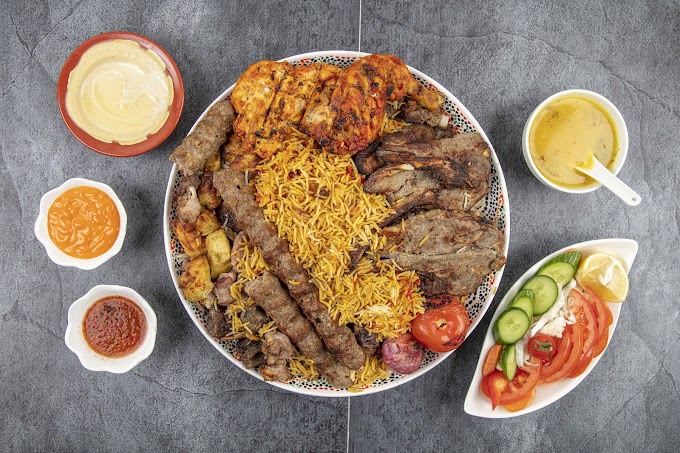Introduction
Indian food is a colorful tapestry of tastes, textures, and traditions. It may appear daunting, but it is actually simpler than you can imagine to cook authentic Indian food at home. Here's the step-by-step guide to prepare Indian meals that will tickle your taste buds and connect you with a glorious culinary heritage.
1. Know the Basics of Indian Cuisine
Indian food is based on three elements: spices, textures, and balance.
- Spices: It's not just about heat but layers of flavor. Start with staples like cumin, coriander, turmeric, and garam masala.
- Balance: Sweet, sour, salty, bitter, and umami all have a place in every dish.
- Textures: From creamy curries to crispy snacks, variety is key.
Tip: Think of spices as seasoning in American cooking. They really do add flavors without overpowering.
2. Stock Your Indian Pantry
Many recipes will call for ingredients you rarely or never stock in your pantry. Here are the basics and not so-basics:
- Spices: turmeric, cumin, garam masala, coriander powder, mustard seeds, and red chili powder.
- Base Ingredients: Ginger, garlic, onions, tomatoes, and green chilies.
- Grains: Basmati rice, chickpea flour, and lentils (red lentils are easiest to start with).
- Dairy: Yogurt, ghee (clarified butter), and coconut milk for creamy curries.
Where to buy: Most of these can be found in the international aisle of your grocery store or online. Indian grocery stores are treasure troves for authentic products.
3. Start with Familiar Flavors
If you’re new to Indian cooking, try dishes that use ingredients and techniques familiar to American kitchens.
- Curry Chicken: Similar to a hearty stew, with warm spices and a tomato base.
- Vegetable Stir-Fries: Indian stir-fries (sabzi) use spices like cumin and turmeric to elevate vegetables.
- Flatbreads: Think of naan or roti as a cousin to pita or tortillas.
Tip: Begin with classics such as Butter Chicken, Dal (lentils), or Aloo Gobi (spiced potatoes and cauliflower) - all surefire winners.
4. Reduce the complexity using One-Pot or Pressure Cooker Recipes
For ease of preparation, even traditional Indian dishes can be readily adapted to convenient modern appliances: Instant Pot, slow cooker etc.
- Make the one-pot chicken curry, or lentil soup (Dal) in Instant Pot for hassle-free cooking experience.
- Use your slow cooker for long-simmering dishes like lamb rogan josh or butter chicken.
5. Master the Art of Tadka (Tempering)
Tadka, or tempering, is a quick cooking technique that releases the full potential of spices.
- Heat oil or ghee.
- Add whole spices like cumin seeds, mustard seeds, or curry leaves.
- Pour this fragrant oil over your dish for an instant flavor boost.
- Think of this as finishing a dish with the flourish of herbes de province in Western cuisines.
6. Combine Indian Food with American Comfort
Ease into Indian flavors by combining traditional dishes with familiar sides:
- Serve butter chicken with rice pilaf or garlic bread.
- Combine spiced lentil soup with a side salad.
- Enjoy masala fries as a spin on French fries.
7. Get Creative with Fusion
Don't be afraid to get creative and fuse Indian flavors with American staples:
- Make a turmeric-spiced roast chicken or curry-flavored mac and cheese.
- Naan is used as a pizza base, topped with tandoori chicken.
- Make Indian-inspired tacos using paneer or spiced chickpeas.
8. Cooking Together and Storytelling
Indian cuisine is also much about the making rather than about food. Include your family members or friends:
- Talk about the backgrounds of dishes like where curry actually originated or how the spices originated.
- Make the process of cooking social, too - a fun bonding and learning activity.
9. Adjust to Your Taste
Indian recipes are quite adaptable. Do not like too much heat? Take out some chili.
Want creamier flavors? Add a little more yogurt or coconut milk. Indian food is all about adjusting to taste.
Want creamier flavors? Add a little more yogurt or coconut milk. Indian food is all about adjusting to taste.
10. Diversify with Regional Specialties
Indian cuisine is not a single dish-it's an umbrella of regional tastes.
- North India: rich creamy curries, naan, and tandoori delights.
- South India: coconut curries, dosas, and sharp rasam.
- West India: spicy sea foods and colorful street food.
- East India: Mustard-flavored curries and sweetmeats, like rasgulla.
Bonus Tips for Success
- Taste as you go—spices need balancing.
- Watch YouTube tutorials or blogs for step-by-step guidance.
- Don't be afraid to experiment and make the recipe your own.
Conclusion
Indian cooking is a flavorful journey, not a destination. Start small, be adventurous, and soon, you’ll have a repertoire of go-to dishes that bring the taste of India into your home.
Indian cooking is a flavorful journey, not a destination. Start small, be adventurous, and soon, you’ll have a repertoire of go-to dishes that bring the taste of India into your home.
Thank you for visiting my Blog!





.jpg)

